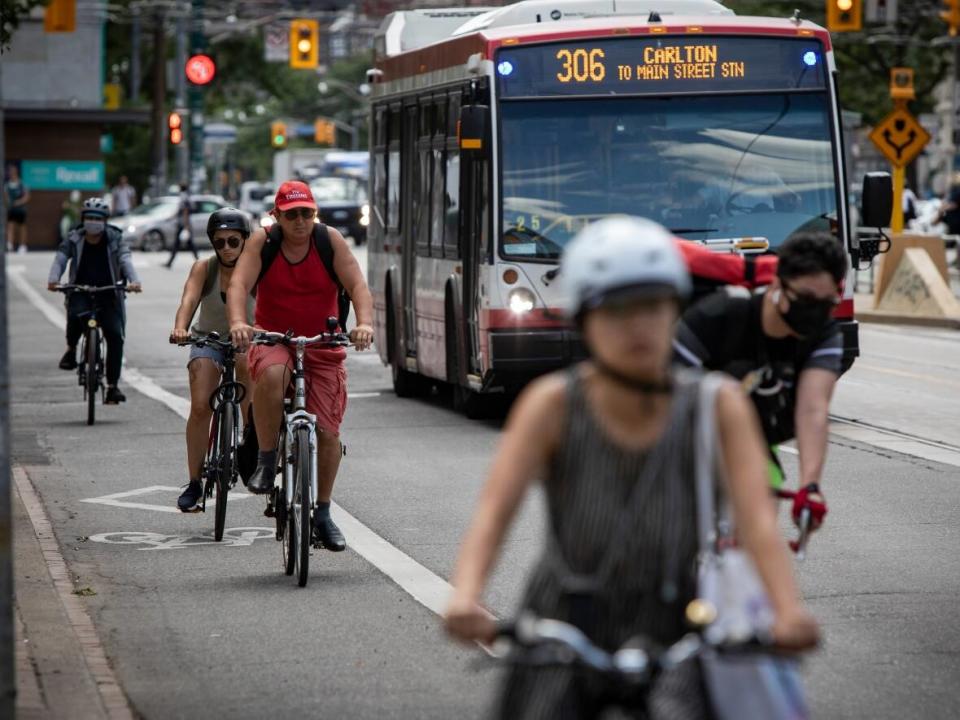Walking, cycling rose on stretch of Yonge due to ActiveTO, CafeTO pilot, data shows

The number of people walking and cycling increased on a stretch of Yonge Street in midtown Toronto after patio areas were expanded and bike lanes created as part of a pilot project, according to city data released on Monday.
As part of the ActiveTO Midtown Complete Street Pilot, city staff tracked activity on Yonge Street between Bloor Street and Davisville Avenue between May 2021 and June 2022.
The city created a protected bike lane along the Line 1 subway and allowed restaurants to set up 17 curb lane cafes to in 2020, 18 in 2021 and 21 this year.
The pilot led to a slight increase in vehicle travel times at midday, the data shows. But the city says the pilot has changed the street.
"Yonge Street has been transformed into a complete street through the CafeTO and ActiveTO programs, which were both created in 2020 as quick-start COVID-19 response programs," the city says on its website.
"CafeTO provided urgent support to hundreds of local restaurants and ActiveTO has connected the city's cycling network like never before."
According to the city, cycling volumes on Yonge Street in the pilot increased between 35 per cent and 193 per cent over the time period.
At the busiest part of the pilot corridor at Macpherson and Rowanwood avenues, the number of people cycling between 7 a.m. and 11 p.m. increased from 600 to 1,760, the data shows.
According to the city, pedestrian volumes on Yonge Street in the pilot area increased between 68 per cent to 126 per cent over the time period.
The city attributed the increase in part to seasonal changes in pedestrian activity and shifts through the pandemic.
Slight increase in vehicle travel times, data shows
Vehicle travel times, however, increased in the midday period by 1.5 minutes compared to travel times before the pandemic. Changes to vehicle travel times during the a.m. and p.m. peak periods were generally less than one minute, plus or minus, the city said.
As well, vehicle volumes on Yonge Street in the pilot area changed by plus or minus 10 per cent between May 2021 and June 2022.
"Community consultation has taken place before and during the pilot, with local businesses, four Business Improvement Areas, several neighbourhood associations and area residents," the city said in a news release on Monday.
"Further feedback will be gathered before making a recommendation on whether the pilot should be made permanent next year."
Toronto city council approved the pilot in April 2021, as part of its pandemic mobility recovery strategy. In April 2022, council approved the extension of the pilot on temporary basis to allow for more monitoring, consultation and evaluation.
The City's transportation services division is expected to report to the city's infrastructure and environment committee and city council by January 2023 with more data, analysis and recommendations for the pilot.

